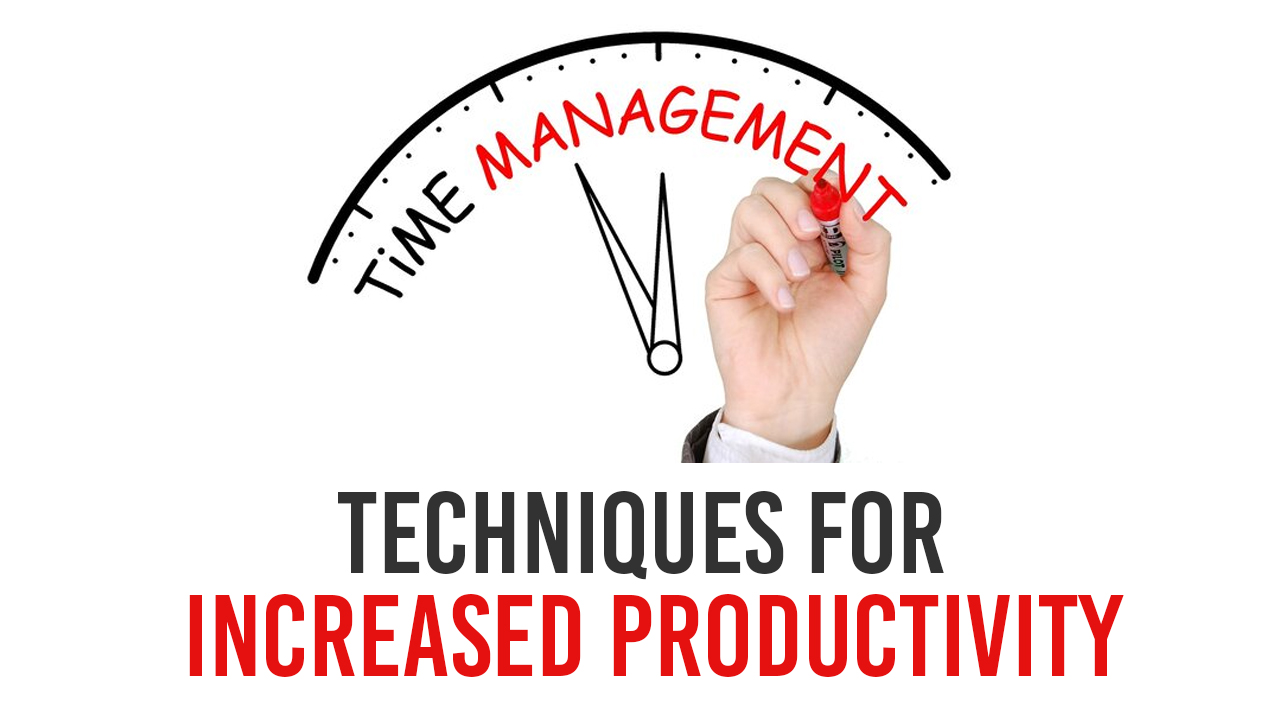Welcome to the world of office management! It's like being the conductor of a big orchestra, making sure everyone and everything work smoothly. We'll explore how to create a happy workplace, improve how things get done, and understand the ins and outs of working together. Join us on this journey to discover simple and effective ways to make offices work better for everyone.
Time Management Techniques for Increased Productivity -

In the fast-paced world of office management, mastering time management is the key to unlocking heightened productivity. This involves prioritizing tasks, setting realistic goals, and leveraging effective techniques to make the most of each workday.
One essential technique is the "Pomodoro Technique," where work is divided into intervals, typically 25 minutes, separated by short breaks. This helps maintain focus and prevents burnout. Another approach is the "Eisenhower Matrix," classifying tasks into four categories based on urgency and importance, aiding in efficient prioritization.
Additionally, embracing technology tools, such as project management software and calendar apps, can streamline organization and communication. Encouraging employees to establish daily routines and avoid multitasking can further enhance productivity.
By implementing these time management techniques, office managers can create a more structured and efficient work environment, ultimately fostering increased productivity and job satisfaction.
How to work on time management techniques for increasing office productivity -
1. Prioritize Tasks:
Begin by identifying and prioritizing tasks. Use techniques like the Eisenhower Matrix to categorize tasks based on urgency and importance. This helps in focusing on what truly matters.
2. Set Clear Goals:
Define specific and achievable goals for yourself and your team. Clear objectives provide direction and purpose, making it easier to allocate time effectively.
3. Use the Pomodoro Technique:

Break your work into focused intervals, usually 25 minutes, followed by short breaks. This method enhances concentration and prevents burnout, contributing to sustained productivity.
4. Leverage Technology:
Explore productivity tools and apps like project management software, calendars, and task management apps. These tools can streamline communication, collaboration, and task organization.
5. Establish Routines:
Encourage the development of daily routines. Consistency fosters a sense of structure, helping individuals manage their time more effectively and reducing decision fatigue.
6. Avoid Multitasking:
While multitasking may seem efficient, it often leads to decreased overall productivity. Encourage a focus on one task at a time to improve the quality of work and reduce errors.
7. Delegate Appropriately:
Recognize the strengths of your team members and delegate tasks accordingly. Effective delegation not only distributes the workload but also allows individuals to excel in their areas of expertise.
8. Regularly Review and Adjust:
Periodically assess your time management strategies. If certain techniques are not yielding the desired results, be open to adjustments and improvements.
9. Encourage Time Blocking:
Allocate specific blocks of time to particular tasks or types of work. This helps create dedicated periods for focused effort, minimizing distractions.
10. Provide Training and Resources:
Equip your team with training on effective time management techniques. This can include workshops, resources, or access to tools that support efficient work practices.
By actively incorporating these strategies into the office culture, you can cultivate a more time-conscious and productive work environment.
Benefits -
1.Higher Productivity:
Efficient time management leads to increased work output.
2. Reduced Stress:

Organized schedules alleviate the pressure of tight deadlines.
3. Improved Focus:
Prioritizing tasks enhances concentration and quality of work.
4. Enhanced Work-Life Balance:
Allocating time wisely promotes a healthier equilibrium.
5. Better Decision Making:
Clear goals contribute to more informed decision-making.
6. Increased Accountability:
Structured approaches foster a sense of responsibility.
7. Resource Optimization:
Efficient time use minimizes waste of resources.
8. Effective Collaboration:
Well-managed time improves teamwork and communication.
9. Greater Job Satisfaction:
Achieving goals boosts employee contentment.
10. Adaptability to Change:
Time-savvy individuals handle disruptions more effectively.
In conclusion, the adoption of time management techniques emerges as a pivotal catalyst for elevating office productivity. By empowering individuals with tools to prioritize tasks, optimize focus, and maintain a healthy work-life balance, organizations can witness tangible benefits such as heightened efficiency, reduced stress, and improved collaboration. The simplicity and effectiveness of these techniques underscore their value in fostering a workplace where individuals not only meet deadlines but also find fulfillment in their contributions. As time management becomes a shared practice, the cumulative impact is a more resilient, adaptable, and thriving office environment.



Comments